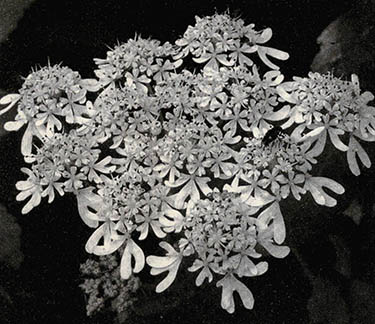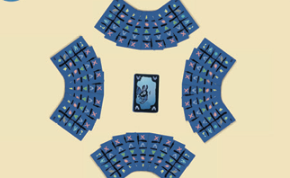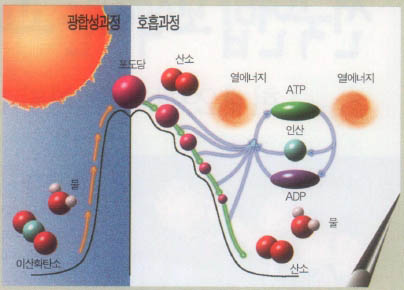생물체의 한가지 특징은 새로운 유기체에 자신과 똑같이 구성될 수 있는 DNA 코드를 전달함으로써 자기 자신을 복제하는 것이다. 박테리아와 같은 원시 생물체는 주로 하나가 둘로 나누어지는 단순한 분열법에 의해 복제를 하지만 때로는 한 박테리아가 매우 원시적인 형태의 섹스를 통하여 DNA를 전달하기도 한다.
다세포 생물은 그들의 DNA를 성세포가 만들어질 때 분리되는 염색체 속에 보관하고 있다. 식물의 암수 성세포는 예외없이 이 방법으로 DNA를 전달하므로 식물은 섹스를 하고 있다고 분명히 말할 수 있다. 근래의 연구에 의하면 식물도 섹스를 하려고 애쓰고 있다고 한다.
단순한 이끼류까지 포함해서 대부분의 육상 식물은 그들의 난소를 자기 내부에 가지고 있으므로 정소 세포는 난소와 수정하기 위해 물이나 공기를 타고 흘러가야 한다. 공기를 이용하는 경우라면 보다 진화된 식물들은 꽃가루로 정소를 감싸서 그것이 마르지 않도록 한다. 꽃가루를 이용하여 번식하는 식물들의 다양한 방법은 감탄할 만하다.
고대 소철류 목(目)은 이억팔천만년 전 이첩기에 처음 나타났다. 소철류와 나머지 나자식물(은행, 침엽수)은 공룡시대에 번성했지만 개화식물이 출현하면서 서서히 퇴화되었다. 오늘날 침엽수가 번성한 데 비하여 소철류는 종도 다양하지 못하고 주로 열대지방에만 남아 있다. 야자류와 양치류의 중간에 걸쳐 있는 것으로 보이는 대부분의 소철류의 꼭대기는 굵은 줄기 끝에 생겨나 있는 가죽같은 커다란 잎으로 싸여 있다. 한때 과학자들은 소철류도 소나무와 같이 바람을 통하여 수술의 정소를 암술의 난소에 옮기는 것으로 생각했다. 마이애미 대학의 식물학자 월리암 탕의 최근 연구에 의하면 소철의 일종인 자미아 푸밀라는 자기복제를 하는데 다른 방법을 사용한다고 한다.
대부분의 나자식물과는 달리 개화식물(피자식물)은 꽃가루 수정을 위하여 동물을 유혹한다. 그 중 한 방법은 따뜻하게 하는 것이다. 탕의 관찰에 의하면 보다 원시적인 소철류로 보이는 자미아 푸밀라의 커다란 수술에 있는 꽃가루는 아주 작은 껍질들로 보호되고 있는데, 이 껍질이 열리면서 온도는 정확히 5℃ 증가한다고 한다. 풍뎅이는 수술이 가지는 온기와 향기 그리고 즙액에 유혹당해 이끌려 들어온다. 꽃가루를 뒤집어 쓴 풍뎅이가 암술로 갈 때 수정이 이루어진다.
식물의 섹스는 개화식물에서 가장 분명한데, 곤충이나 조류, 심지어는 박쥐와 같이 움직이는 생물들의 도움을 얻을 수 있는 아주 다양하고도 근사한 방법으로 꽃가루 수정 방식을 발전시켜왔다. 최근의 한 식물학자들은 에어랑기 엘리시라고 불리는 마다가스카르 난초의 정확한 짝짓기 형태에 대하여 연구할 수 있었다.
난초류는 모양 크기 색깔에 있어서 믿을 수 없으리만큼 다양한 종이 있다. 난초들은 자웅동화(암수 부분을 동시에 만들어 내는 꽃)이며 그들의 꽃가루는 폴리니아라고 불리는 덩어리 형태로 곤충에 실려서 다른 꽃의 암술 부근이나 암술머리로 옮겨진다.
스웨덴 웁살라 대학의 닐슨과 피터슨, 그리고 마다가스카르 안타나나리바 대학의 로바코난드리안니나는 마이크로태그라고불리는 색깔이 있는 화학약품으로 에어랑기스 엘리시의 폴리니아를 표시하는데 성공했다.
이 난초류를 수정시키는 매나방이 숲의 가장자리와 언덕을 따라다니면서 5m 안에 있는 식물들 간의 수정에 관계한다는 사실이 알려졌는데, 그것은 매나방이 밤중에 그렇게 날아다니기 때문이다.
매나방이 에어랑기스 엘리시에 수정시키는 방식으로 인하여 적은 종류의 난초만이 제대로 씨를 만들 수 있었지만, 그들이 크게 번성하여 난초의 전체 수는 변화되고 있다. 꽃가루를 마이크로태그방식으로 표시하는 방법을 이용하여 식물의 진화, 특히 다윈의 성선택설에 관한 연구가 가능하게 될 것이라고 연구자들은 믿고 있다.
현재 워싱턴 대학에 있는수분(授粉) 생물학자인 포돌스키는 '이상하게 유혹하는 식물'에 관해 연구하고 있는데, 이는 꽃이 피는 관목으로 '베스렐리아 트리플로라'라고 잘 알려져 있다. 이 관목들은 벌새에 의해 수분되는데, 이 나무에 많은 꽃이 피어 있을 때 벌새들은 보다 잘 끌려온다.
베스렐리아 트리플로라의 이상한 점은 양성화동주로서 한 나무에 수술만 있는 꽃과 암술과 수술이 같이 한 꽃에 있는 두 종류의 꽃을 생성한다는 것이다. 즉 그 꽃의 대부분은 자웅동화지만 일부 꽃에는 수술만 있으며 수술만 있는 꽃은 양성을 가진 꽃보다 적은 양의 꽃가루를 생성한다.
양성화동주의 용도는 무엇일까? 자웅동화의 꽃이 많은 나무들이 더 많은 벌새를 유혹할 수는 있었겠지만 수정의 비율은 수술만 있는 꽃이 많은 나무만큼 좋지 않다는 것으로 포돌스키는 결론지었다.

One of the characteristics of life is that it reproduces itself, passing on its building code of DNA to new organisms. Primitive life like bacteria usually reproduce by fission, a simple splitting into two, but sometimes one bacterium will transfer DNA to another in a very early version of sex.
Multicellular organisms package their DNA in chromosomes that split when sex cells are made. Male and female sex cells from plants are no exception to this method of transferring DNA, so it can be said that plants definitely have sex. According to recent research, they also work hard at making sex possible.
Most land plants, even simple mosses, keep their eggs inside the original plant, and the sperm cells must travel through water or air to fertilize the eggs. If using air, more evolved plants package the sperm in pollen grains so they won't dry up. The various ways in which plants succeed with pollen is remarkable.
The ancient order of Cycadales first appeared in the Permian period, 280 million years ago. They and the other gymnosperms (gingkos and conifers) flourished during the age of dinosaurs, but gradually diminished with the rise of flowering plants. Now only the conifers remain numerous, while cycads are represented by few varieties, mainly restricted to the tropics. Looking like a cross between a palm and a fern, most cycads are crowned by big leathery leaves emerging from the top of a thick trunk. Scientists once thought that cycads, like pine trees, used only the wind to transfer pollen from their male cones to the eggs in female cones. According to recent work by botanist William Tang, of the University of Miami at Coral Gables, Florida, the cycad Zamia pumila uses other means for making reproduction possible.
Unlike most gymnosperms, flowering plants (angiosperms) must attract animals that will pollinate them. One way is to warm up. When Tang examined the supposedly more primitive cycad, Zamia pumila, he found that the pollen of its large male cones is protected by scales that open and actually warm up 5 degrees centigrade. Beetles were attracted to the warmth, odor and juices of the male cones. When pollen-covered beetles went to female cones, pollination was accomplished.
Plant sex is most obvious in flowering plants, which have achieved pollination by evolving extraordinarily diverse and beautiful ways of securing the help of mobile organisms like insects, birds, even bats. Recently a group of botanists have been able to study the exact mating patterns of a species of Madagascar orchid called Aerangis ellisii.
Orchids have an incredible diversity of shapes, sizes and colors. They are hermaphroditic (bearing both male and female parts), and their pollen comes in masses called pollinia which stick to the attracted insect, to be carried to the female part, or stigma, usually of another flower.
L. Anders Nilsson and Borge Pettersson from the University of Uppsala, Sweden, with Elisabeth Rabakonandrianina from the University D'Antananariva, Madagascar, marked the pollinia of Aerangis ellisii with colored histochemicals called microtags.
It was found that the hawk moths that pollinate this orchid usually did so for adjacent plants within a range of 5 meters, along the forest border and uphill, since hawk moths fly that way during a night's work.
The way hawk moths pollinate Aerangis ellisii changes the population of the orchid, for although only a small number of the plants were able to breed, those that did had great success. The researchers believe that their method of microtagging pollen will make it possible to study plant evolution, particularly the Darwinian ideas of sexual selection.
Pollination biologist Robert D. Podolsky, now at the University of Washington in Seattle, has been studying "strange floral attrac-tors," notably a flowering bush called Besleria triflora. This shrub is pollinated by hummingbirds, who are much more attracted when there are a large number of flowers on the plant.
The odd thing about Besleria triflora is that it produces two kinds of flowers, a "dimorphic sexual system" called andromonoecy. Most of its flowers are hermaphroditic, but some flowers are only male, with stamens that produce much less pollen than the stamens of the bisexual flowers.
What's the use of andromonoecy ? Podolsky determined that bushes with many hermaphroditic flowers did attract more hummingbirds, but the rate of pollination was not as good as in those bushes with many stamen-only flowers as well.

















